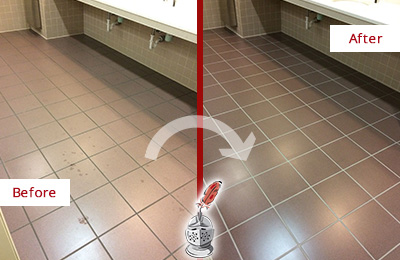The writer is making a few great pointers related to How to Prevent Bathroom Water Damage overall in this great article further down.

The washroom is incredibly at risk for moist buildup and prospective water damage because of the regular use water in it. This write-up provides straightforward inspection methods to help discovering water damages hazards.
The regular use of water in the washroom makes it extremely prone for wet buildup and also potential water damage. By evaluating it routinely, you can decrease water relevant problems.
The following collection of assessments is very easy to perform and ought to be done when in every 3 months in order to maintain your washroom healthy and to prevent potential water damages triggered by the bath tub, the shower, pipe joints as well as plumbing, sinks, closets, and also the toilet
Do not overlook doing these examinations and be comprehensive while doing them. Bear in mind that these straightforward examinations can save you a lot of money by supplying very early signs for water damages
Sinks and also Cabinets
Sinks and cabinets are exposed to wetness as well as humidity everyday as well as are usually forgotten. Inspect regularly under the sink and on the countertop above it. Repair any drip in the catch as it might recommend drainpipe troubles. Check out the sink, slow-moving draining pipelines may suggest a blocked drain. Change sink seals if they are fractured or loosened.
Tub and Shower
The shower and bath tub call for unique interest and maintenance. Examine the ceramic tiles and change if split. Make certain that there is no missing grout in between the ceramic tiles. Examine and change split caulking at joints where the walls meet the flooring or the tub. Blocked drains and also pipes problems will certainly stop the tub from drying and also may indicate significant problems under the bath tub. Talk to an expert immediately to stop architectural damage. Take note of discolorations or soft locations around the tub walls as they might show an interior leak.
Plumbing
Signs for water damages are difficult to spot since the majority of pipelines are installed inside the walls.
Pay unique interest to flooring and also walls moisture and also spots as they may show an unnoticeable plumbing problem. Examine wetness levels in adjacent rooms too.
The Bathroom
The toilet is an at risk water junction. Examine the water lines as well as look for leaks around the commode seat, in the hose pipe, and under the water container. If you spot any kind of indications of moisture on the floor around the commode, check for leakages in the toilet rim and also storage tank seals.
Be aware that hanging bathroom bowl antiperspirants increases the possibilities for clogs.
10 TIPS TO PREVENT WATER DAMAGE IN THE BATHROOM
The average household uses approximately 80-100 gallons of water per person per day. For a family of 4, that's almost 2,500 gallons of water a week! The largest portion of this consumption comes from bathroom use. Flushing the toilet uses the most water, followed by taking a shower or bath. With that much water running through the home, water damage in the bathroom is bound to happen. Knowing how to spot signs of a water leak is essential to preventing long-term damage. This guide provides you with tips to reduce the impact of water damage on your bathroom.
CAUSES OF BATHROOM WATER DAMAGE
Pipe breaks are the most common cause of water damage we see in our daily jobs. The age of a pipe plays a large role in a pipe break as well as corrosion. Over time, the metal begins to break down, allowing water to escape. Frozen pipe breaks are also a concern in the winter months. Toilet overflows caused by paper products or children flushing inappropriate items. Degraded caulking around the toilet or bathtub can allow water seepage, sometimes behind the fixture, into the subfloor or walls. Condensation forms when the water in a pipe is cooler than the air temperature. Beads of water form on the exterior of the pipes, sometimes so much so that the water begins to drip and pool below. Sink or shower backups created by poor drainage. HOW TO PREVENT WATER DAMAGE IN YOUR BATHROOM
Inspect your toilet supply line for worn or frayed hoses and replace them as needed. Winterize your plumbing to prevent a frozen pipe break. Use vent fans to prevent condensation that can lead to mold growth. Routinely check and replace degraded caulking around your toilet or bathtub. Increase the temperature in your toilet tank and insulate your pipes during the warm summer months to keep condensation from forming. Use child safety locks on the toilets. Flush only toilet paper. "Flushable" wet wipes are actually not good for your plumbing system. Additionally, feminine hygiene products should not be flushed. Prevent water from escaping the tub or shower. Make sure shower curtains are in good condition. Inspect shower doors and replace the seal strip if necessary. Wipe up any water that accumulates on the floor and use bath mats. Water left to sit can cause damage to the tiles and flooring. Refrain from using bath products containing heavy oils to avoid a clogged drain.

I found that page on Looking for Signs of Water Damage in the Bathroom while doing a search on the search engines. Appreciated our review? Please share it. Let somebody else find it. I cherish reading our article about Preventing Water Damage in the Bathroom.
Explore Now